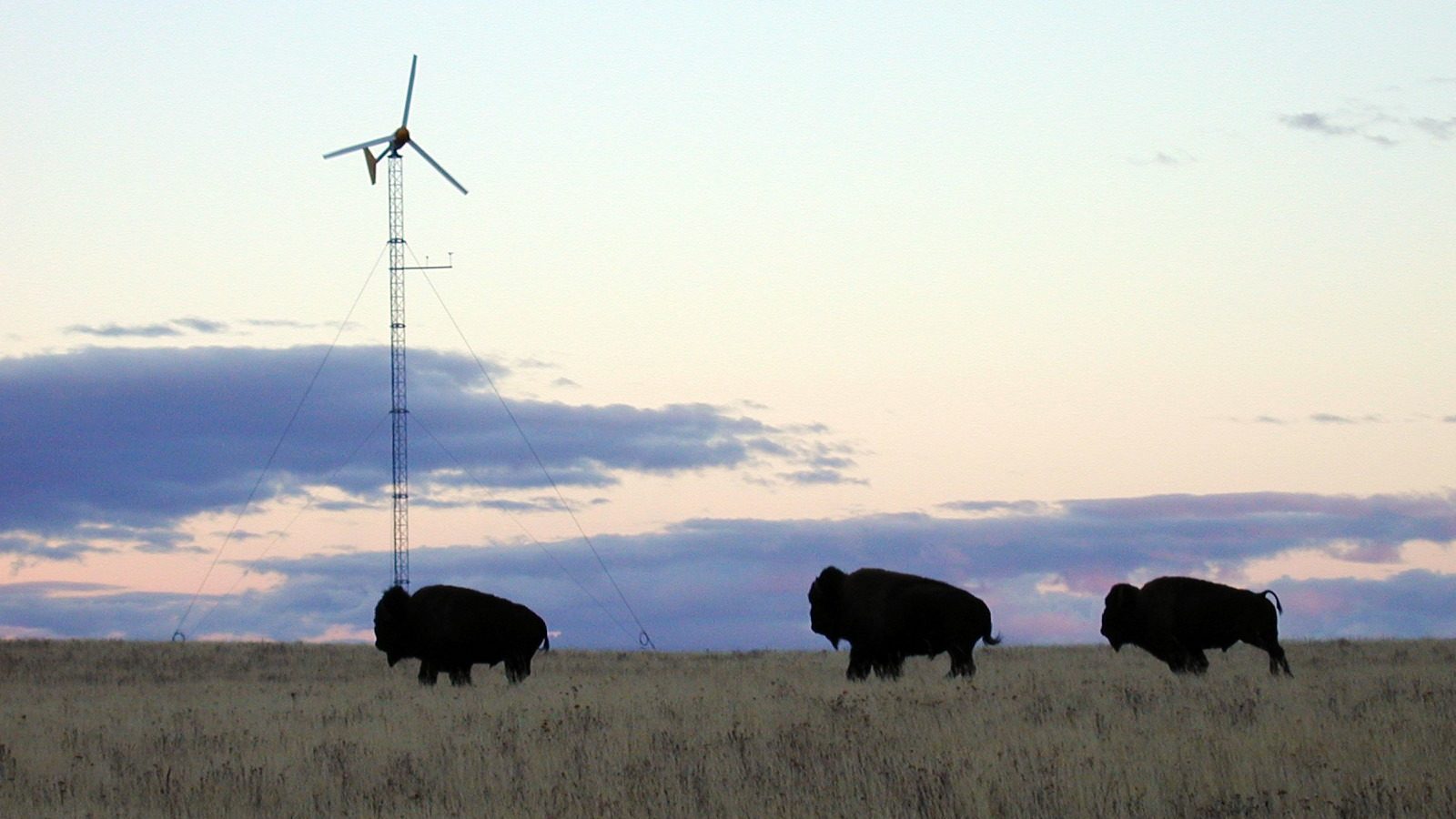We have much more to do and your continued support is needed now more than ever.
A New Coalition Advances Equitable Climate Policy

Climate change-fueled disasters, from heatwaves to the increased spread of invasive species, threaten our communities, wildlife, and public lands. As President Biden and Congress chart a path towards a clean economy, they should prioritize investments in the communities most harmed by the toxic production of fossil fuels and on the frontline of the climate crisis.
The majority of communities facing disproportionate harm from the climate crisis are Black, Indigenous, Latinx, and Asian. Many of these communities have faced historic disinvestment and a lack of protection from state and federal regulatory agencies.
That is why we’ve launched the Clean Economy Coalition of Color. The CECC is an alliance of some of the nation’s most insightful Black, Latinx, Indigenous, Asian, and Pacific Islander leaders and advocates of color. These leaders are committed to amplifying ideas, recommendations, and solutions that uplift the priorities and economic interest of historically marginalized communities, to guide clean energy economy policies and implementation. The clean energy and climate solutions proposed by leaders from these resilient communities can help address environmental injustices, improve climate resilience, and reduce carbon emissions.
Hear from experts: virtual event with environmental justice leaders
Charting a path towards a clean energy economy must account for the needs of communities on the frontlines of the climate and pollution crises. Join the June convening of the Clean Economy Coalition of Color (CECC) on June 30th to hear from environmental justice leaders and experts on equitable solutions to the climate crisis.
We hope that the mission of our coalition resonates beyond people who already engage in clean energy future work. Whether you’re a racial justice expert just getting familiar with climate justice or a climate change expert learning about intersectionalities, we want to hear from you.
RSVP NOW
How to build a climate economy for all
We must invest in climate action with a focus on the communities most harmed by ongoing fossil fuel pollution and climate impacts. The American Jobs Plan, introduced by President Biden, seeks to target 40 percent of the benefits of climate and clean infrastructure investments to under-resourced communities as a way to address long-standing and persistent racial injustices. These injustices have resulted in inefficient drinking water and wastewater infrastructure throughout the nation. They have also resulted in lead exposure and increased flooding disproportionately affecting vulnerable communities. A chief priority of the CECC in the coming months will be to ensure this federal commitment becomes a reality that can help build resilience and economic opportunities with vulnerable communities. Our communities and our planet need it.
A vision for a clean economy future
The National Wildlife Federation Environmental Justice Program envisions policies that ensure communities of color can participate fully in our national transition to a clean economy future.
#1: Enhancing pathways to sustainable business ownership by people of color
Every region will need investment in the transition to a clean energy future that doesn’t only provide jobs, but opportunities for business ownership and economic inclusion. But currently, the workforce needed to build clean energy infrastructure, from wind turbines to solar panels, does not represent our changing demographics. There is a significant gap between the services needed to transition to a clean economy and what services are present in many communities of color.
Often, businesses are unwilling to provide services to communities of color, stalling progress on clean energy projects. Similarly, inadequate availability of workforce training leaves businesses with a small pool of potential employees.
Federal and state agencies should invest in:
- workforce development programs within communities of color
- financial advising and publicizing available resources to support long-term growth
- removal of barriers to resources, including certifications and business loans.
#2: Enhance workforce development and pathways for employment
Workforce development programs can leave attendees without clear career pathways after the program. Workforce development programs should adapt to emerging and growing fields within the clean economy including training in offshore wind development and other renewable energy projects, electric vehicles, climate resilience, and landscape restoration projects. Participants must be able to leave these programs with marketable, transferable skills, and ample opportunities.
Environmental justice advocates have identified the need for workforce training programs to make stronger inroads in communities. Investment in community-based programs can help expand job opportunities for graduates of workforce development programs.
#3: Removing barriers to resources
Many small business owners struggle with access to information about grants, loans, and training, often encountering language or cultural barriers. In addition to a lack of overall information on the clean economy and business opportunities, many educational materials do not resonate with frontline communities. Messengers matter: programs must frame opportunities in a way that most resonates with low-wealth, Black Indigineous, Latinx, Asian, and Pacific Islander communities.
Congress and state governments should leverage the expertise of people from communities of color. One way to accomplish this is by working with community leaders that have established relationships with frontline communities to not only ensure information is shared, but to also build authentic partnerships.
Small business owners of color have a difficult time accessing capital to start, grow, and adapt their businesses. Investing in mentorship opportunities could connect new and experienced business owners of color, helping to improve financial literacy and access to resources.
#4: Investing in infrastructure to revitalize communities
Green job proposals can better include the environmental justice needs of frontline communities, such as pollution clean-up and wastewater infrastructure upgrades, in addition to landscape conservation projects.
As the last two years have shown, access to the internet is a key and vital utility for students, small businesses, and community organizers trying to protect their neighbors from the COVID-19 pandemic. Federal infrastructure programs should fund improvements in access to water, transportation, energy, and broadband services to enhance opportunities in rural, urban, and coastal communities.
#5: Diversifying perspectives through better representation
Federal programs can better serve communities if they welcome input in early stages of development and during implementation. Involving communities before the launch of workforce training and other programs can help U.S. agencies avoid issues that hamper program effectiveness. By recruiting, hiring, and retaining employees of color at all levels of federal initiatives, agencies can ensure more equitable representation strengthens the efficacy of programs that address pollution and climate change.
#6: Valuing knowledge and expertise
Federal infrastructure, climate resilience, and conservation plans can be strengthened by welcoming in the knowledge and expertise of communities of color. Indigenous communities have rich, culturally-rooted histories, and a wealth of traditional knowledge and wisdom when it comes to natural spaces, agriculture, and environmental justice. The same could be said for many communities of color. But, there is a lack of awareness and outreach when it comes to this expertise. Federal agencies tasked with designing and implementing programs should value and incorporate the knowledge from these resilient communities of color. Education and recognition of these truths among the broader public should help address these gaps and ensure that frontline communities see themselves in the clean economy.
#7: Investing in our youth
Pathways to green careers most welcome young people. Programs can equip guidance counselors and educational institutions, develop job shadowing opportunities, and address concerns or expectations held by young people.
#8: Amplifying health benefits of instructure
In urban, rural, and coastal communities, food insecurity is a growing issue. Infrastructure can tackle this public health issue in addition to addressing harmful pollution that degrades human health, the environment, and wildlife.
#9: Collecting data to ensure equitable access
Federal agencies do not sufficiently capture metrics and data on benefits to communities of color. Without this information, it remains unclear who benefits from government investments and job programs.
Environmental justice screening and mapping tools can help federal agencies understand which communities are experiencing disparate impacts of pollution and climate change. These measurements can ensure an equitable distribution of funds to historically underserved communities. As workforce trainings and clean energy job programs are implemented, agencies can ensure efforts at outreach to communities of color are successful by assessing who is applying, enrolling, and staying in positions.
#10: Expanding local stewardship of federal investment
Federal investment in communities can be a gamechanger for many communities. But a lack of flexibility in spending federal funding dulls potential positive impact.
When smaller organizations and communities receive funding, many struggle to manage a large influx of capital due to strict reporting requirements. Federal agencies should increase the flexibility of reporting requirements and trust local municipalities, counties, and community-based organizations to best identify local needs. In addition, program implementers should provide financial advising to reduce the burden of reporting criteria on local officials. Investment can improve the infrastructure to address pollution and climate resilience, as well as capacity building, so that these communities are well-prepared for long-term success.
To learn more about how to build a just and equitable clean energy future, tune in to our Clean Economy Coalition of Color roundtable.
RSVP NOW






















